您们的需要 我们的专注
Your Needs Our Focus
财经快讯
-
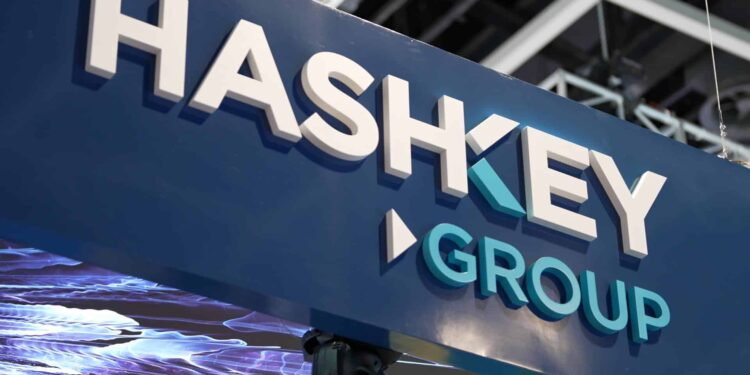 查看详情
查看详情香港版“coinbase”?香港最大持牌加密貨幣交易所考慮港股IPO
HashKey在香港和新加坡運營多元化業務,包括交易平臺、風險投資和資產管理服務。作為香港最大的持牌加密貨幣交易所運營商,該公司受益於香港去年推出的虛擬資產監管框架。 上述知情人士向媒體表示,目前相關討論仍在進行中,估值和時間安排等細節可能會發生變化。HashKey的一位代表表示,公司目前沒有上市相關信息需要披露。 市場有風險,投資需謹慎。本文不構成個人投資建議,也未考慮到個別用戶特殊的投資目標、財務狀況或需要。用戶應考慮本文中的任何意見、觀點或結論是否符合其特定狀況。據此投資,責任自負。
2025-10-10 -
 查看详情
查看详情加入“AI泡沫”大論戰,高盛:還沒有泡沫!
近日,高盛分析師Peter Oppenheimer、Sharon Bell等在其最新研報中給出了明確的答案:盡管當前市場呈現出部分歷史性泡沫的特征,但我們尚未身處其中。高盛認為,與過往泡沫最大的不同在於,本輪科技股上漲主要由強勁的基本面和實實在在的盈利增長所驅動,而非純粹的投機狂熱。 然而,高盛強調了幾個關鍵區別。首先,科技板塊的價格上漲迄今為止有堅實的盈利增長作為支撐。其次,引領市場的龍頭企業擁有異常強大的資產負債表,這與以往高杠桿驅動的泡沫形成鮮明對比。最後,當前AI領域的競爭主要由少數幾家現有巨頭主導,而大多數泡沫通常在大量新進入者湧入、競爭格局混亂的時期形成。 估值拉升但未達泡沫水平 報告將美股科技股當前的“七巨頭”與歷史上的市場領導者進行比較。數據顯示,這七家公司的預期市盈率中位數約為27倍,遠低於2000年科技泡沫頂峰時期龍頭公司約52倍的水平。 從PEG比率(市盈率相對盈利增長率)來看,美國科技股當前水平仍低於1990年代末的泡沫高點。基於歷史收益的PEG比率顯示,科技泡沫頂峰時期該指標達到3.7倍,而目前僅為1.7倍。 盈利驅動而非投機推動 報告顯示,自2009年以來,全球科技行業的每股收益(EPS)增長已遠遠超過非科技行業,這一差距在金融危機後持續擴大。 而當前,盈利增長是支撐股價表現的關鍵支柱,這為市場的穩定性提供了更堅實的基礎。報告預計,2025科技股“七巨頭”的綜合凈資產收益率將達到46%,凈利潤率為29%,遠高於2000年科技泡沫時期主導公司16%的凈利潤率。 盡管整體基調偏向樂觀,高盛並未忽視市場潛藏的風險,特別是激增的資本支出和創紀錄的市場集中度。 關鍵區別在於融資方式。目前,科技巨頭的資本支出主要來自其充裕的自由現金流,而非大規模舉債。它們的資產負債表異常強健,現金儲備充足,凈負債率普遍為負。這與1990年代電信公司通過大量發行股票和債券來為投資提供資金的情況截然不同,從而降低了整個金融體系的系統性風險。 不過,高盛也同時在報告中提醒,近期科技公司的債務融資活動有所增加,這是一個值得關註的轉變。 高盛認為,這種高度集中的狀況“不可持續”,但指出這本身並不等同於泡沫。歷史上,主導市場的行業長期保持領先地位是常態。從19世紀初至今,金融、交通、能源和科技行業先後成為市場主導力量,每個時期都持續數十年。 報告最後,高盛總結稱,市場尚未進入全面的AI泡沫,但投資者不能掉以輕心。 面對高估值和高集中度的風險,高盛給投資者的核心建議是“多元化”,建議從以下幾個方面著手: 風格多元化: 隨著利率環境變化,傳統的“價值”與“成長”風格之間的界限開始模糊,為跨風格投資提供了更多機會。 科技行業內部多元化: 在關註現有巨頭的同時,也應尋找那些能利用當前資本支出熱潮、創造新產品和服務的下一波科技“超級明星”。 市場有風險,投資需謹慎。本文不構成個人投資建議,也未考慮到個別用戶特殊的投資目標、財務狀況或需要。用戶應考慮本文中的任何意見、觀點或結論是否符合其特定狀況。據此投資,責任自負。
2025-10-09 -
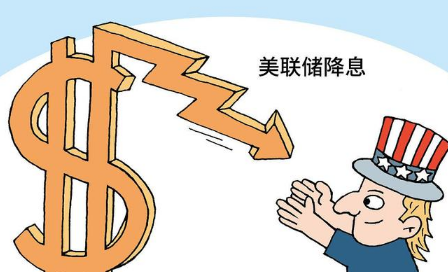 查看详情
查看详情市場認為10月降息“定了”,但一些美聯儲高官不這麽看
美聯儲與市場的觀點分歧正在擴大,一邊是認為10月再次降息勢在必行的投資者,另一邊則是部分對通脹保持警惕並呼籲謹慎行事的美聯儲官員。 本周一,多位地方聯儲主席密集發聲,反駁了“下個月降息已是板上釘釘”的看法。他們強調,即使決策者需要在防範過度緊縮與抗擊通脹之間取得平衡,也不應過快采取寬松政策。 這些官員擔憂的核心是居高不下的通脹。克利夫蘭聯儲主席Beth Hammack周一在法蘭克福表示,通脹趨勢正朝著“錯誤的方向”發展。聖路易斯聯儲主席Alberto Musalem也表達了類似觀點,認為決策者需要“謹慎行事”。 然而,市場似乎並未理會這些鷹派警告。根據聯邦基金期貨的交易數據,投資者和華爾街分析師仍然堅信寬松政策即將到來。根據CME FedWatch工具,約90%的投資者押註美聯儲在10月28-29日會議上降息25個基點,70%預期12月再次降息。 通脹擔憂成為鷹派表態主因 上周五發布的數據顯示,美國通脹仍然粘性較強。8月整體PCE通脹同比上升2.7%,核心PCE通脹上漲2.9%,均高於美聯儲2%的目標。 鷹派官員們普遍認為,在通脹明確回到2%的目標之前,任何過度寬松的舉措都為時過早。 聖路易斯聯儲主席Alberto Musalem周一表示,決策者應該“頂住”高於目標區間的通脹。 克利夫蘭聯儲主席Beth Hammack的觀點更為尖銳。她指出,美聯儲“辜負其使命”已經長達四年半之久,因為通脹一直高於目標。她表示,與去年降息時通脹趨勢向下不同,“過去一年,通脹基本處於橫盤狀態,一些組成部分甚至有所上升。” 在她看來,通脹要到2027年底才能回落至2%的目標,因此“需要維持限制性的政策立場”。 其他官員也表達了類似的謹慎。堪薩斯城聯儲主席Jeff Schmid上周表示,通脹仍然過高,而目前的政策只是“略微限制性”。芝加哥聯儲主席Austan Goolsbee則警告,不應僅僅因為就業數據放緩就“過度提前實施太多降息”。 就業下行風險引分歧 不過,這種謹慎立場並未獲得所有官員的認同,美聯儲內部分歧顯而易見。在最新的經濟預測中,有10名官員預計今年將降息三次,而9名官員則預計降息兩次或更少。 被認為更傾向於降息的官員們,主要理由是勞動力市場日益顯現的疲軟跡象。紐約聯儲主席John Williams周一表示,美聯儲不希望對其最大化就業的使命造成“不應有的傷害”。 聯儲理事Michelle Bowman上周四警告稱,美聯儲在就業問題上面臨“落後於曲線”的風險,她認為勞動力市場依然“脆弱”。新上任的理事Stephen Miran也表示,借貸成本維持高位的時間越長,“經濟真正開始出現失業率實質性上升的風險就越大”。 不過,裏士滿聯儲主席Tom Barkin則認為,由於企業在過去幾年招聘受限,它們不太可能訴諸裁員,這意味著“勞動力市場的下行空間應該有限”。 花旗集團的經濟學家周一發布報告稱,美聯儲官員的基調“過於鷹派”。該行認為,官員們“高估了通脹的上行風險,同時低估了就業的下行風險——這一點在未來幾個月可能會變得更加明顯。” 在10月底的會議之前,美聯儲將獲得最新的9月通脹和就業數據,這些數據將是決策的關鍵依據。然而,如果美國政府陷入停擺,可能會導致關鍵經濟數據的發布被推遲,從而給美聯儲的決策帶來更多不確定性。 風險提示及免責條款 市場有風險,投資需謹慎。本文不構成個人投資建議,也未考慮到個別用戶特殊的投資目標、財務狀況或需要。用戶應考慮本文中的任何意見、觀點或結論是否符合其特定狀況。據此投資,責任自負。
2025-09-30 -
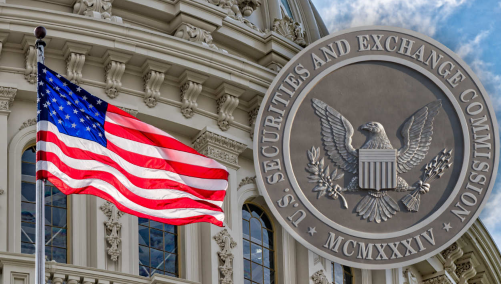 查看详情
查看详情美國SEC主席呼籲放松監管:將評估以半年報代替季報
當地時間周一,美國SEC主席Paul Atkins在為英國《金融時報》撰寫的評論文章中宣布,他將快速推進由特朗普總統提出的放寬財報披露頻率的建議。Atkins強調,“政府應提供保護投資者所需的最小有效劑量的監管,同時允許企業蓬勃發展。” 除了財報規則,Atkins領導下的SEC此前已在加密貨幣領域采取了更為友好的立場,並叫停了此前備受關註的氣候風險披露規則的辯護工作,體現了其系統性的監管松綁思路。 作為其監管放松議程的關鍵一步,Atkins正快速推進一項允許上市公司自行選擇以半年度為周期披露財務報告的提案。 Atkins指出,這一想法並非首創。他提到,美國直到1970年才開始實行季度報告制度,並且現行監管體系已為部分公司提供了這種靈活性。 他強調,“給予公司選擇半年報的權利,並非是對透明度的倒退”,而是為了重新聚焦於市場驅動的披露實踐,使之更有利於公司及其投資者的利益。 Atkins在文中明確表示,他正致力於將SEC帶回其核心使命,扭轉他所認為的前幾年的“使命偏離”。 而近年來,SEC已偏離了國會90多年前為其設定的明確使命,以及維持資本市場信心的判例和可預測性。 他在文章中寫道: 批評前任議程與歐洲監管規則 他將矛頭指向其前任Gary Gensler在拜登政府期間推行的激進監管和執法立場,並已采取實際行動推翻其核心議程,例如SEC今年投票決定,停止為一項要求公司披露氣候風險的規則進行法庭辯護。 他認為,這些規定推動了一種“雙重重要性”方法,要求披露“可能具有社會意義但通常不具有財務重要性”的事項,這是由“政治潮流或扭曲的目標”所驅動。 “這些指令可能會將成本強加給美國的投資者和客戶,卻對引導資本決策的信息幾乎沒有助益。” 盡管Atkins為放松財報披露要求提供了充分的理論依據,但此舉並未獲得一致認可。據媒體報道,投資者權益倡導團體已對此表示擔憂。 他們擔心,信息披露的減少將對依賴公開信息做出決策的散戶投資者構成傷害,並可能削弱作為美國資本市場基石的高效性。這一爭議點預計將成為該提案未來推進過程中的主要辯論焦點。 市場有風險,投資需謹慎。本文不構成個人投資建議,也未考慮到個別用戶特殊的投資目標、財務狀況或需要。用戶應考慮本文中的任何意見、觀點或結論是否符合其特定狀況。據此投資,責任自負。
2025-09-29 -
 查看详情
查看详情366億券商股,吸收合並草案出爐!
湘財股份吸收合並大智慧進展迅速。 繼宣告盡調完成3天後,9月25日晚間,湘財股份發布換股吸收合並大智慧並募集配套資金暨關聯交易報告書(草案)。具體而言,湘財股份擬換股吸收合並大智慧,湘財股份的A股換股價格為7.51元/股,大智慧的A股換股價格為9.53元/股。換股吸收合並中,按照換股比例1:1.27計算,湘財股份擬發行的股份數量合計為22.82億股。 股權變動方面,在不考慮募集配套資金的情況下,此次交易後,大智慧註銷,原大智慧實控人張長虹及其一致行動人從未持有湘財股份到持有湘財股份總股本17.32%,而湘財股份實控人黃偉及其新湖控股一致行動人,持有比例從此前的40.37%降低至22.45%,黃偉仍為實控人。 今日開盤,湘財股份一度大漲超7%,截至券商中國發稿,報12.86元/股,總市值超366億元;大智慧一度漲超4%,截至券商中國發稿,報15.91元/股。 吸收合並草案出爐 湘財股份吸收合並大智慧正在加速。 9月22日,湘財股份宣告相關審計盡調工作基本完成,9月25日晚間,吸收合並草案即出爐。 草案詳細披露,湘財股份擬換股吸收合並大智慧。湘財股份的A股換股價格為7.51元/股,大智慧的A股換股價格為9.53元/股。本次換股吸收合並中,按照換股比例1:1.27計算(即大智慧股東持有的每1股大智慧股票可以換取1.27股湘財股份股票),湘財股份擬發行的股份數量合計為22.82億股。換股實施後,湘財股份的總股本擬增至51.41億股。 此次交易的關註點是,本次吸收合並後,大智慧將終止上市,並註銷法人資格;湘財股份作為存續公司將承繼及承接大智慧的全部資產、負債、業務、人員、合同、資質及其他一切權利與義務,此次交易構成重大資產重組及關聯交易。 與此同時,湘財股份作為存續公司,擬同步向不超過35名特定投資者募集配套資金不超過80億元,其中,擬使用配套募集資金25億元用於金融大模型與證券數字化建設項目,10億元用於大數據工程及服務網絡建設項目,15億元用於財富管理一體化項目,10億元用於國際化金融科技項目,20億元用於補充流動資金及償還債務。 在控制權方面,公告明確指出,本次交易前,湘財股份的實際控制人為黃偉,且其控制權在最近36個月內保持穩定。交易完成後,黃偉仍將為存續後湘財股份的實際控制人,因此本次交易不會導致公司控制權發生變更。 本次權益變動前,原大智慧的實控人張長虹及其一致行動人張婷、張誌宏未持有湘財股份的股份;本次權益變動後,張長虹及其一致行動人合計持有湘財股份8.91億股,占換股吸收合並後上市公司總股本的17.32%。信息披露義務人及其一致行動人承諾本次權益變動獲得的股份鎖定12個月,並承諾不謀求湘財股份的控制權。 值得一提的是,此次交易及權益變動尚需湘財股份和大智慧股東大會審議通過及監管部門核準。 AI券商即將來襲? 湘財股份與大智慧雙方淵源頗深。此次合並是雙方繼2015年首次嘗試合並失敗後時隔十年再度“聯手”,上一次因為大智慧方面涉及信息披露違規而失敗,此次吸收合並似乎汲取了上次教訓,雙方的吸收合並動作之迅速,遠超外界預期。 在A股市場,擁有券商牌照的金融科技公司已經有指南針和東方財富,兩家公司旗下分別有麥高證券和東方財富證券,均由此前並購網信證券和同信證券而來,獲得券商牌照之後,兩家公司業績大幅增長。 此次湘財股份擬吸收合並大智慧,意味著,繼東方財富和指南針後,湘財股份有望成為A股第三家互聯網乃至AI券商。 據介紹,湘財股份主營業務以證券服務業為主,主要通過全資子公司湘財證券展業,業務資質齊全。而大智慧在金融科技行業深耕二十余年,已成為中國領先的金融信息服務商之一,擁有業內完整的產品組合。在國際業務方面,大智慧境外金融信息服務已輻射至東亞及東南亞多個國家。 湘財證券總裁周樂峰接受券商中國記者采訪時表示,在行業整合浪潮下,中小券商的生存關鍵在於“特色化+科技化+資本化”三者平衡,通過對自身的精準定位與資源整合,在同頭部券商與新興互聯網平臺日趨激烈的競爭中,開辟新的發展空間。 周樂峰介紹,湘財證券以輕資產戰略為重心根基,依托金融科技積澱與財富管理的先發優勢,聚焦差異化競爭。而大智慧則憑借千萬級用戶生態及AI選股、量化工具等技術壁壘,奠定行業領先地位。 “兩者合並一體化效應下的‘AI投顧券商’已現雛形。”他說,在“牌照+產品+流量+數據+科技能力”的資源整合效應下,可通過三重路徑釋放協同價值。 草案稱,此次交易雙方主營業務存在顯著協同效應,能夠充分發揮交易雙方的業務優勢,實現用戶和資源共享、技術合作和市場協同、重塑內部管理、強化優勢業務領域競爭力。湘財股份通過與金融科技行業領先企業大智慧融合,整合成熟的產品體系、技術實力及用戶資源,進一步完善業務布局,強化雙方在金融產品、信息科技、用戶資源等領域的協同價值,提升綜合金融服務能力,全面打造差異化、特色化競爭優勢,致力於通過雙方業務整合實現“1+1>2”的效果從而實現湘財股份的跨越式發展。 風險提示及免責條款 市場有風險,投資需謹慎。本文不構成個人投資建議,也未考慮到個別用戶特殊的投資目標、財務狀況或需要。用戶應考慮本文中的任何意見、觀點或結論是否符合其特定狀況。據此投資,責任自負。
2025-09-26 -
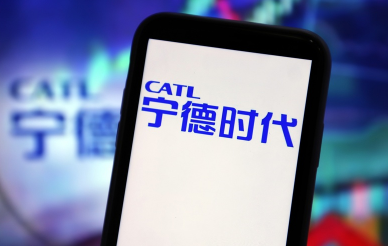 查看详情
查看详情寧德時代市值超越貴州茅臺,成為中國第三大上市公司!
寧德時代股價周四創下歷史新高,市值達到1.83萬億元人民幣,超越貴州茅臺的1.8萬億元估值,成為中國第三大本土上市公司。 寧德時代漲幅一度高達6%,目前報393.25元,本月累計漲幅已達30%。大和資本市場香港分析師Kelvin Lau表示,電池前景良好,部分投資者可能正在從電動汽車股輪動至電池股,令行業龍頭寧德時代受益。 摩根士丹利本周的實地調研顯示,寧德時代憑借自主研發的高復雜性智能制造產線和先進材料科學技術,持續構建競爭壁壘。該行維持"增持"評級,目標價425元,較當前水平有8%上漲空間。 作為全球最大的電池制造商,寧德時代在快速擴張的儲能電池系統(ESS)領域占據主導地位,投資者預期這一優勢將轉化為未來盈利增長的關鍵驅動力。 智能制造構築技術護城河 摩根士丹利實地考察發現,寧德時代的制造能力已達到行業領先水平。公司工廠日產220萬顆電芯,設置超過6800個實時質量控制點,每秒處理34萬次數據交易,打造出高度智能化的生產體系。 這種極高復雜性和智能化水平的制造產線,結合先進的分子級材料科學技術,為公司構建了難以復制的技術壁壘,形成了質量溢價和成本競爭優勢。 寧德時代目前訂單充足,產能利用率超過90%。公司正在建設250GWh新產能,目標是在明年將總產能提升至1TWh,以滿足不斷增長的市場需求。 儲能業務展現盈利優勢 在儲能系統業務方面,寧德時代產品顯示出顯著的經濟價值。據摩根士丹利報告,公司產品在全球市場能為客戶帶來約14個百分點的內部收益率(IRR)溢價,在中國市場帶來7-8個百分點溢價。 這一盈利優勢反映了寧德時代在儲能技術方面的領先地位。隨著全球能源轉型加速,儲能市場需求快速增長,為公司未來業績增長提供了重要支撐。 摩根士丹利認為,寧德時代儲能業務潛力巨大,特別是在歐洲市場取得突破的背景下,公司有望進一步擴大市場份額。 行業領先地位持續強化 摩根士丹利9月11日報告指出,寧德時代的行業領導地位非但沒有被削弱,反而在競爭中得到進一步強化。隨著規模較小的競爭對手在關鍵的儲能領域陷入盈利困局,寧德時代的競爭優勢更加明顯。 該投行認為,當前大熱的固態電池技術被視為短期炒作,寧德時代的技術領先優勢將得以延續。在估值方面,公司在同行中已具備顯著吸引力,已經成為"行業中最便宜的"。 摩根士丹利基於2026年預期EBITDA的15倍EV/EBITDA估值,給出425元人民幣目標價,認為寧德時代的護城河依然穩固,長期投資價值突出。 風險提示及免責條款 市場有風險,投資需謹慎。本文不構成個人投資建議,也未考慮到個別用戶特殊的投資目標、財務狀況或需要。用戶應考慮本文中的任何意見、觀點或結論是否符合其特定狀況。據此投資,責任自負。
2025-09-25 -
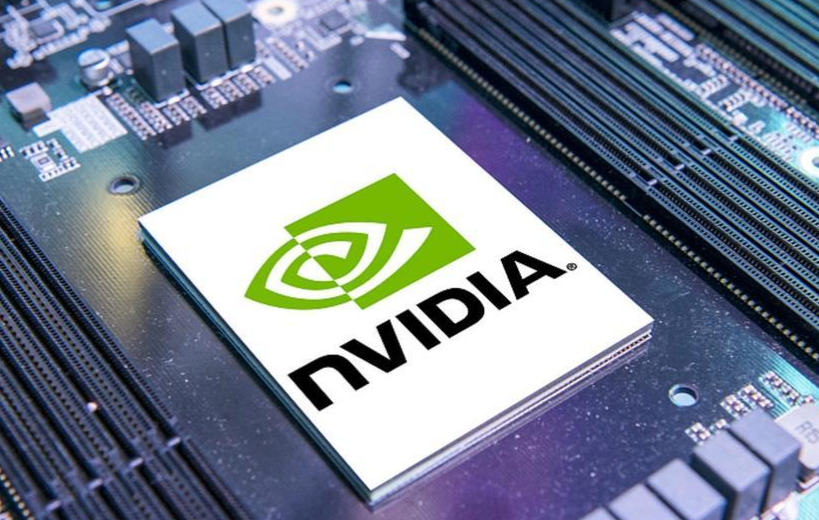 查看详情
查看详情“錢實在太多”!英偉達無處可投,相比回購,不如選擇“讓AI閉環”
手握巨額現金的英偉達正在嘗試一種全新的資本運用方式,把數百億美元投向關鍵客戶、合作夥伴,甚至競爭對手,去打造一個自我循環的“AI閉環生態”,從而鎖定未來芯片的長期需求。 最引人註目的動作,是英偉達最近宣布計劃向OpenAI投資高達1000億美元,用於支持其進行大規模數據中心擴建。這個舉措不僅是對OpenAI的強力支持,也體現了英偉達CEO黃仁勛的核心思路——用強大的資產負債表和市場信心,來鞏固整個AI產業鏈。 消息一出,市場立刻給出了熱烈反應:英偉達市值當天就飆升近1600億美元。這筆投資既緩解了外界對OpenAI資金狀況的擔憂,也讓人們看到了所謂“循環”(circularity)的商業模式:英偉達投錢給初創公司,而這些公司又用錢回過頭來買英偉達的芯片。 這種模式並不只限於OpenAI。從雲服務商CoreWeave,到競爭對手英特爾,再到馬斯克的xAI,英偉達的投資版圖已經伸向AI領域的各個角落。 “錢太多”的煩惱 對大多數公司來說,現金充裕是好事,但對英偉達,這已經成了一個特殊的難題。FactSet數據顯示,過去四個季度,英偉達創造了720億美元自由現金流,本財年有望逼近1000億美元,除了蘋果,沒有哪家科技巨頭能比肩。 問題是,怎麽花? 並購幾乎行不通。 早在2020年收購Mellanox時,英偉達就遇到過監管阻力。在當前的地緣政治環境下,大型芯片並購幾乎不可能輕松過關。而且,黃仁勛本人偏愛扁平的組織架構,更傾向小規模的技術整合。 回購和研發消化不掉。 英偉達在過去四個季度花了近500億美元做回購,還追加了600億美元計劃,但依舊擋不住現金流入的速度。研發投入雖然兩年翻了一番,但占收入的比例反而下降到9%,遠低於此前的22%。 戰略投資:客戶、夥伴甚至對手 在傳統路徑受限的情況下,英偉達選擇用戰略投資去打造一個內循環的AI生態。 對OpenAI的1000億美元投資承諾是其中核心。NewStreet Research分析稱,英偉達每投給OpenAI 100億美元,後者就會花350億美元買回英偉達芯片。雖然這種交易可能拉低英偉達的單片利潤率,但能確保需求不斷,還能為缺錢的AI公司輸送“生命線”。 其他投資案例包括: CoreWeave:英偉達持有其7%股份,最近雙方簽署了一份63億美元協議,英偉達承諾回購其未用的雲容量,進一步綁定關鍵客戶。 英特爾:英偉達出人意料地投了50億美元給老對手,合作開發新產品,讓GPU更順暢地和英特爾CPU結合,借機在PC市場擴張。 xAI:馬斯克的xAI早就把英偉達列為戰略投資方。今年3月,英偉達又和xAI等夥伴一起加入了一個數十億美元的AI數據中心和能源建設計劃。 雙贏棋局:穩住需求,壓低融資成本 這套投資打法,本質上是英偉達的一盤雙贏棋——既穩住了自身的需求,又幫合作夥伴降低融資成本。 對英偉達來說,最直接的好處就是鎖定未來幾年龐大且穩定的芯片訂單,避免需求波動。對OpenAI這樣的夥伴來說,英偉達的背書就是一張巨大的信用擔保。 要知道,OpenAI預計到2029年累計虧損高達440億美元,還要負擔芯片采購和數據中心租賃等巨額開支。在英偉達介入前,它們融資的利率高達15%,反映了市場對其商業模式的不信任;而有微軟背書的項目,利率只有6%至9%。甚至穆迪還因為Oracle對OpenAI的依賴過重,把展望從“穩定”下調到“負面”。 英偉達的加入改變了一切。憑借資本市場對它“近乎牢不可破的信心”,英偉達可以直接用資產負債表甚至增發來支撐AI基建項目,成本遠低於外部融資。業內人士預計,這將顯著降低OpenAI的信貸風險,讓它拿到更低利率的貸款。 風險提示及免責條款 市場有風險,投資需謹慎。本文不構成個人投資建議,也未考慮到個別用戶特殊的投資目標、財務狀況或需要。用戶應考慮本文中的任何意見、觀點或結論是否符合其特定狀況。據此投資,責任自負。
2025-09-24 -
 查看详情
查看详情美股與黃金同創新高,這意味著什麽?
現貨黃金也漲勢如虹,一度觸及每盎司3748.84美元的歷史新高。 據追風交易臺消息,德意誌銀行9月22日發布的研報認為,盡管近期風險資產表現出顯著的韌性,但市場遠未達到“完美定價”的狀態,認為“市場幾乎沒有進一步上漲空間的觀點是錯誤的”。 比如,黃金價格創歷史新高、持續的通脹和關稅擔憂、勞動力市場放緩以及央行降息預期,都反映出市場已計入大量潛在的下行風險。 德意誌銀行詳細闡述了市場遠未“完美定價”的五大理由: 德意誌銀行報告的第一個核心論點是,黃金價格處於歷史高位,這是市場恐懼而非極度樂觀的典型跡象。報告強調,黃金作為一種不支付股息或票息的資產,其吸引力通常在投資者尋求避險時上升。 因此,從歷史上看,高金價往往與經濟動蕩和不確定性相伴。這與科網泡沫時期形成鮮明對比,當時實際金價徘徊在數十年來的低點,反映出投資者追逐高回報風險資產的極度樂觀情緒。 根據美國通脹掉期數據顯示,美國2年期通脹互換(inflation swap)利率在上周五收於2.92%,這意味著市場預期未來幾年通脹仍將徘徊在美聯儲的目標之上。 三、關稅擔憂持續存在 報告提到,除了已實施的關稅,美國仍在對制藥、半導體和關鍵礦產等行業進行審查,這帶來了進一步加征關稅的可能性。這些懸而未決的風險,是市場無法忽視的負面因素,並已反映在定價之中。 四、美國勞動力市場顯現擔憂:就業增長放緩與衰退信號 目前,美國非農就業人數的6個月平均增長已降至6.4萬人,創下本輪經濟周期以來的新低。失業率升至4.3%,是2021年末以來的最高水平。此外,近期基準修訂表明2024-2025年的就業數據可能比此前預期更弱。 五、美聯儲等央行降息預期:並非經濟強勁的標誌 美聯儲期貨市場甚至定價到2026年底將有超過100個基點的進一步降息。研報指出,這種降息預期並非經濟強勁的信號,而更多地反映了投資者對經濟增長可能放緩的擔憂,認為降息是刺激經濟所必需的。
2025-09-23 -
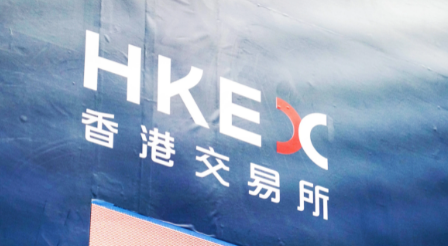 查看详情
查看详情市場嚴重低估了南向資金,高盛:港交所被低估了
高盛認為,盡管港交所股價在過去一個月跑輸主要指數,但市場嚴重低估了南向資金對港股成交量的結構性提振作用。 9月18日追風交易臺消息,高盛股票研究團隊發布研報指出,港交所股價在過去一個月跑輸大盤,主要原因是管理層對2025年下半年投資收益給出了偏向悲觀的指引。 然而另一方面,作為港交所盈利的最關鍵驅動因素,現金股票的日均成交額正以前所未有的速度增長,其中南向資金是主要推手。 高盛因此上調了港交所2025-2027年的每股盈利預測(EPS)。同時維持港交所"買入"評級,目標價從524港元上調4%至544港元,認為當前股價相對於交易活動水平被明顯低估。 南向資金:被忽視的核心增長引擎 報告指出南向資金正以前所未有的姿態影響著香港市場。 數據顯示,9月至今的日均成交額已高達3180億港元,遠超8月份的2790億港元以及年初至今的2540億港元。 這背後最核心的推手,正是持續創下新高的南向資金。無論是凈買入規模、日均成交額,還是對港股總成交額的貢獻度,南向資金都表現出強勁的活力。 高盛估算,在港股市場總成交額的同比增長中,南向資金的貢獻度高達30%至40%。其成交額占港股總成交額的比例,也已攀升至約25%的驚人水平。 更重要的是,南向資金推動港股市值實現了約50%的同比增長,且南向資金和整體市場的換手率都達到歷史峰值。 然而市場對本輪由南向資金驅動的成交量上漲,似乎比2020-2021年的牛市抱有更強的懷疑態度,擔憂其持續性。 然而高盛強調,基於內地投資者的資產多元化配置需求、港股市場的獨特稀缺標的以及顯著的估值折價(更高的股息收益率),南向資金的流入和參與度提升將是一個結構性的長期趨勢,而非短期投機行為。 高盛上調盈利預測與估值 正是基於對南向資金結構性增長的信心,以及近期強勁的交易量數據,高盛對港交所的財務模型進行了全面上調。 高盛將港交所2025-2027財年的每股盈利(EPS)預測上調了3%至4%。具體來看: 2025年每股盈利預測:從12.63港元上調至12.97港元。 2026年每股盈利預測:從13.05港元上調至13.61港元。 2027年每股盈利預測:從13.96港元上調至14.45港元。 在盈利預測上調的基礎上,高盛也重新評估了港交所的目標價。 報告稱,采用三階段股息貼現模型(DDM),並將2026年預測市盈率(P/E)維持在40倍的水平,得出港交所未來12個月的目標價為544港元,較之前的524港元上調了4%。 高盛還提供了兩個估值角度來佐證其“買入”觀點: 歷史估值對比:目前港交所的股價對應其遠期市盈率,略低於歷史周期中位數水平,但其盈利增長前景卻依然強勁。 成交量-股價回歸模型:一個長達20年的數據回歸模型顯示,在當前的成交活躍度水平下,港交所的股價理論上應在590港元左右,這暗示著當前股價存在巨大的修復空間。 綜上所述,高盛認為,市場對港交所股價的定價未能充分反映南向資金帶來的結構性增長紅利。 隨著南向資金持續發力,港交所作為“賣水人”的核心價值將愈發凸顯,其被低估的股價為投資者提供了一個不容忽視的戰略性機遇。 風險提示及免責條款 市場有風險,投資需謹慎。本文不構成個人投資建議,也未考慮到個別用戶特殊的投資目標、財務狀況或需要。用戶應考慮本文中的任何意見、觀點或結論是否符合其特定狀況。據此投資,責任自負。
2025-09-19 -
 查看详情
查看详情美國繼續放寬數字資產監管,SEC大幅降低“數字幣ETF”申請門檻
美國數字資產監管又迎來重要時刻,SEC大幅簡化數字幣ETF審批流程,將為Solana、XRP等現貨加密ETF鋪平道路。 當地時間9月17日,SEC投票通過了三大全國性證券交易所的規則變更提案,為數字資產ETF市場全面開放掃清道路。這一決定標誌著美國數字資產監管政策的重大轉向,將為從Solana到狗狗幣等各類加密貨幣現貨ETF鋪平道路。 新規則建立了通用上市標準,大幅簡化了數字幣ETF的審批流程。資產管理公司和交易所現在可以根據統一標準申請新的加密貨幣現貨ETF,無需經過冗長的定制化監管審查。審批時間從此前的240天或更長縮短至最多75天。 市場預期首批受益的產品將是追蹤Solana和XRP的ETF。資產管理公司一年多前就開始向SEC提交這些產品的申請,但監管機構此前僅批準了比特幣和以太坊現貨ETF。 這是特朗普政府推進數字資產主流化的最新舉措,與前任拜登政府的謹慎態度形成鮮明對比。業內人士表示,雖然監管閘門已經開啟,但產品最終上市仍需完成營銷計劃、法律文件和服務提供商等多項後續工作。 通用上市標準正式生效 SEC此次投票通過的規則變更涉及紐約證券交易所(NYSE)、納斯達克(Nasdaq)和Cboe Global Markets三大交易所。 新規則為數字資產和其他現貨商品ETF建立了通用上市標準,資產管理公司和交易所必須滿足這些標準才能獲得新的現貨加密ETF批準。 SEC今年7月發布的命令詳細說明了這些上市標準的具體內容。在此之前,SEC對每個現貨加密ETF申請都采取逐案審查方式,要求交易所和資產管理公司分別向不同部門提交兩份獨立申請。 Bitwise Asset Management總裁Teddy Fusaro表示: "這是美國數字資產監管方法的分水嶺時刻,推翻了自2013年首個比特幣ETF申請以來超過十年的先例。" 審批效率大幅提升 新流程將顯著加快數字幣ETF的上市速度。據報道,從申請到上市的最長時間將從240天甚至更長縮短至75天,這將為急於進入數字資產市場的資產管理公司提供更高的確定性。 SEC主席Paul Atkins在新聞稿中將委員會成員的批準描述為促進創新和減少數字資產產品壁壘的舉措。這一表態反映出特朗普政府對數字資產更加友好的監管態度。 法律事務所Stradley Ronon合夥人Steve Feinour預計,大多數申請者將選擇一項條款,該條款允許對已有商品期貨交易委員會(CFTC)監管的期貨合約存在至少六個月的加密ETF進行快速審批。 他預計首批產品最快可能在10月上市。 首批產品呼之欲出 市場普遍預期,追蹤Solana和XRP的ETF將成為新規則下首批獲批的產品。資產管理公司一年多前就開始向SEC提交這些申請,但監管機構迄今僅批準了比特幣和以太坊現貨ETF。 即使是比特幣ETF,其在2024年1月的首次亮相也是在經歷多年鬥爭和法律糾紛後才實現的。相比之下,拜登政府時期的SEC在考慮現貨加密ETF方面行動緩慢,而特朗普政府則明確與加密社區保持一致,承諾對數字資產采取更有利的立場。 擁有多個待批產品的Canary Capital首席執行官Steve McClurg表示:"大門已經打開,但仍有很多工作要做。" 他在SEC裁決前曾表示,即使在委員會投票後,"營銷計劃、法律申請、與服務提供商的合作都必須根據新路線圖來解決"。 Feinour指出:"並非每個代幣目前都符合條件,但SEC的批準將打開閘門。"這表明雖然監管門檻已經降低,但數字資產仍需滿足特定標準才能獲得ETF產品批準。 風險提示及免責條款 市場有風險,投資需謹慎。本文不構成個人投資建議,也未考慮到個別用戶特殊的投資目標、財務狀況或需要。用戶應考慮本文中的任何意見、觀點或結論是否符合其特定狀況。據此投資,責任自負。
2025-09-18

